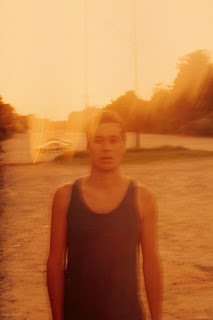Lately I’ve found myself involved in discussions on the term ‘hipsters’ and, more often, the topic of ‘hipster hate’. It may seem untimely to be having such conversations when publications like Adbusters and Time Out New York were running hyper-reactionary cover stories on the definitions of and ‘cultural threat’ of hipsters in 2008 (the first titled “The dead end of Western civilisation”; the second “The hipster must die”), but it could be argued that Australia is only now reaching the saturation point of hipster as visual cultural entity, or that it’s the backlash that is now being widely disseminated, or that the hipster as an ‘identity’ has reached the point of cultural detachment via media stereotyping and so is more able to be analysed from an objective position. Maybe it’s just that ‘Being A Dickhead’s Cool’ YouTube video.
Who or what a hipster is and why they cause such strong reactions is a huge and complex discussion, but I thought I’d pose one possible angle from which to view it, if only to show how unthreatening the whole thing is.
Firstly, I would argue that the term ‘hipster’ as ascribed in articles such as that in Time Out New York is tied to, or has over time taken on traits that tie it to, the notion of ‘subculture’ despite its ties also to more general fashion culture. These would include, but are not limited to, an identifiable demographic (age, class, location, etc), and behaviours that differentiate the ‘group’ from the ‘norm’. As with any talk of a group as a subculture, identifying traits vary by large degrees, ‘members’ can’t ever be separated from their ongoing relationship to the broader society and members may not count themselves as members (which has been seen to be the case most often since the idea of ‘belonging to a subculture’ itself has become part of common education and dismissed as naïve, or really since subcultures were ascribed their titles by media who wanted to sell their shared ideas as sensationalised stories). Ie. Nothing exists in a vacuum.
The reason for relating hipsters to subculture theory is because it’s in that discussion that it becomes clearer that, as ‘emos’ didn’t, hipsters don’t exist in reality as they exist in media (such as the Hipster Runoff blog’s caricatures of hipsters, which also took the idea of ‘authenticity’ from subculture theory). Also, the broader cultural response to the term can be more easily analysed – the ‘us vs them’ response.
It only really matters what the ‘them’ stands for in any subculture situation because it determines the severity of the response. When ‘outsider’ fashion is involved, males usually cop the brunt of criticism because it denotes a threat to masculinity, but in the case of hipsters – the demographic of which is often viewed to be educated, middle-class 20-somethings who value knowledge of obscure cultural products for the sake of being more ‘in the know’ and, hence, ‘culturally elite’ – there is also the threat of exclusivity, even if it’s viewed as false exclusivity. No one likes being made to feel they know less than someone else, even if they believe that person to be unqualified in taking that position. Add to that the view that almost anything can be appropriated into hipster culture if it’s seen as being ‘little known’ and is then ditched when it gains wider attention and a ‘lack of meaning or values’ also gets attributed. Nothing is held as irreplaceable, therefore nothing is meaningful, therefore hipsters stand for cultural vacuousness.
This, I’d argue, is false. As with anyone who involves themselves with culture outside ‘mainstream’ norms, this search is a search for meaning and, yes, naff as it is, it’s about belonging. In fact, it’s almost exclusively about these things; when communication allows all things to become known by all people within small timeframes, therefore not allowing ‘ownership’ over any cultural product; when the value of creativity in broader society is virtually nil; when history is there to be picked over and tried on in the hope that it will provide some hint of purpose when there are no definitions or guidelines that haven’t been questioned, broken or made redundant through circumstance (which is often misinterpreted as irony and then derided as false cleverness or posturing cynicism). The point is, as a whole, this search for meaning, perhaps for a particular demographic, is earnest, its detractors mostly toeing the societal line, and the only people ruining culture the ones who don’t add anything to it at all. Or maybe I just love my life as a dickhead.















